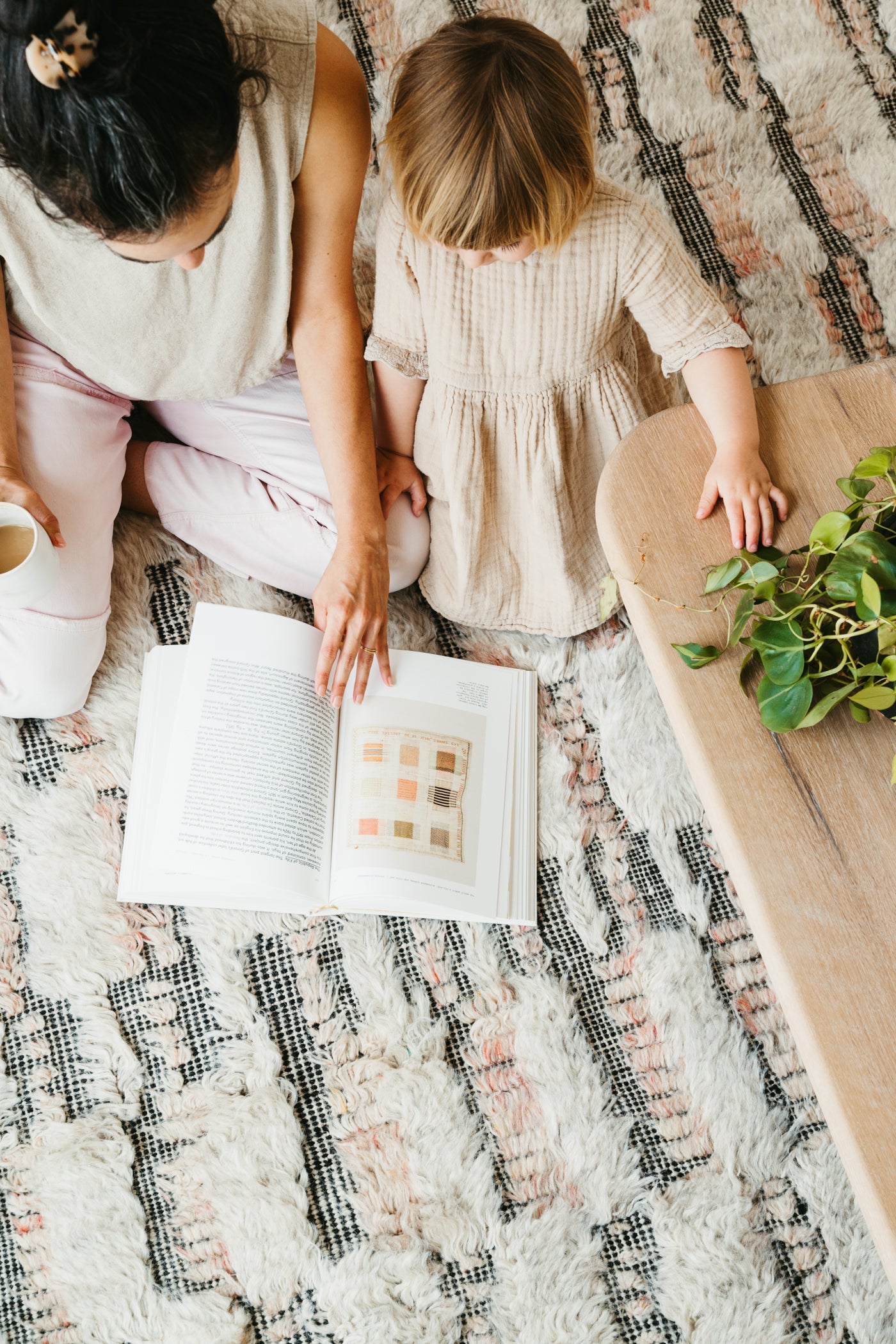Grab that measuring tape! It may seem obvious, but the larger the room, the larger the rug you'll need. Too often we see homes with rugs too small for the space, which can make the room feel unfinished.
To get the perfect fit, a rug should sit at least 1 foot from the wall, leaving some floor visible. We prefer leaving as much as 1.5-2 feet so as to not overwhelm the space.
- 6' x 9'—The perfect place for smaller rugs is centered under your coffee table to create a focal point for the space. For optimal balance, ensure that any occasional chairs are at least partially placed on the rug as well.
- 8' x 10'—When using an 8' x 10' rug, position it so that your couch and occasional chairs are partially on the rug. This ensures that all pieces of furniture are included, creating a balanced and cohesive look.
- 9' x 12'—A larger rug is ideal for defining an entire area. To achieve this, place all furniture fully on the rug, leaving a generous amount of free space around the edges.

















